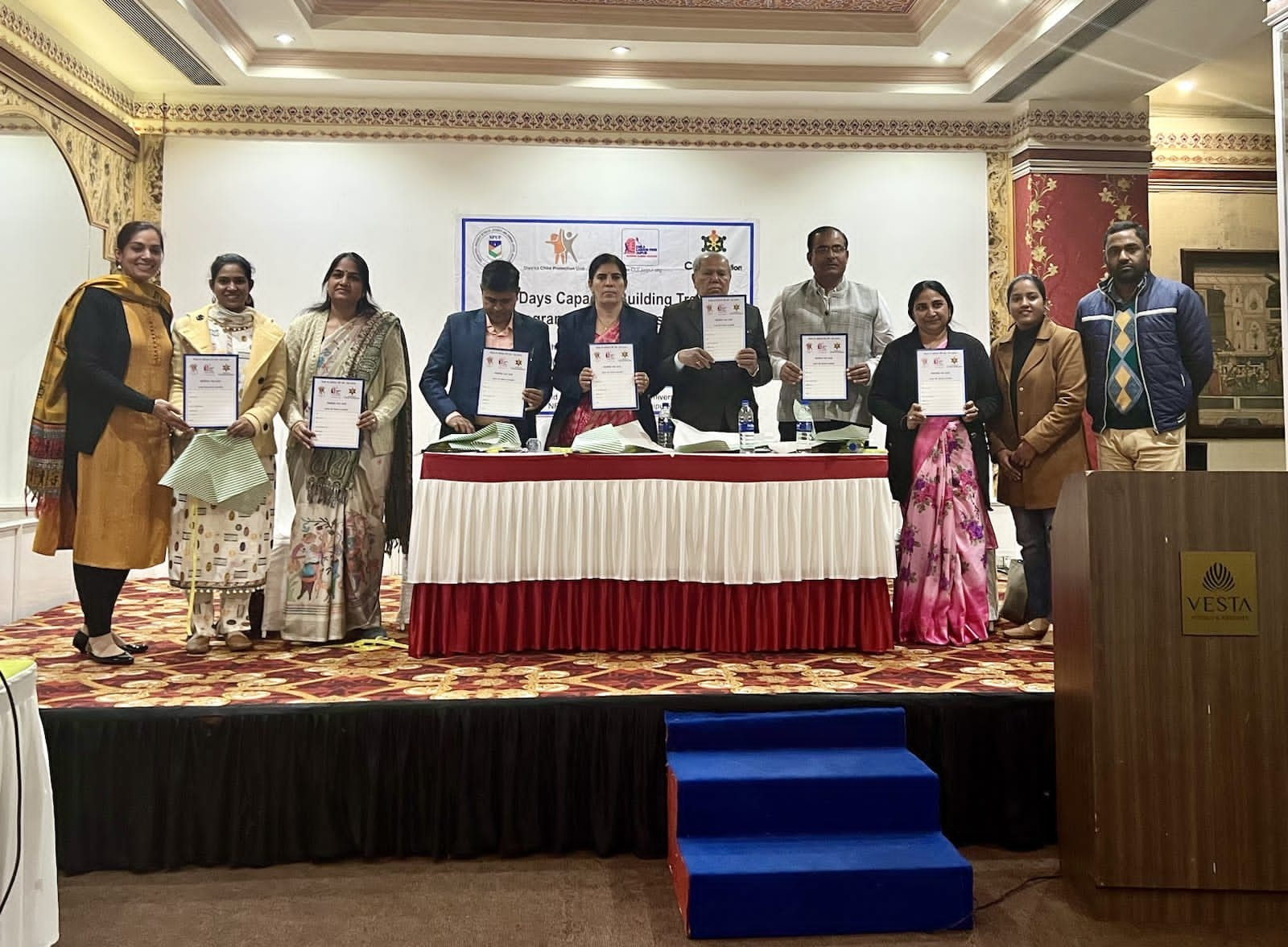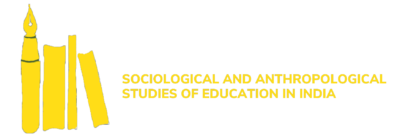Reflections on the Unpredictable nature of the Field
Sujata Bahot
PhD Scholar, National Institute of Educational Planning and Administration
[email protected] | +91 8447628999
Even after finalising and conceptualising the research framework beforehand, the field can present unforeseen challenges. It can quickly turn into an unpredictable site that may defy what one had imagined before the field visit. In such scenarios, researchers must navigate the field and explore every other avenue to carry out data collection. In this article, I share how I had to make significant adjustments to my research framework, including the research tools that I had designed for the study, since the field demanded it.
As my project examines the process of rehabilitation of children rescued from labour sites and addresses how the process of rehabilitation attends to their fundamental right to education, I had set my field site at shelter homes where children rescued from child labour stay in the care and protection of the State. Before I explain the nature of my field experience, it may be useful to consider how the State engages with bonded labour. According to the 1976 Bonded Labour (Abolition) Act, bonded labour is a form of forced labour in which a debtor agrees with a creditor to provide services (labour), either by themselves, their family members, or dependents, for a specified or unspecified duration. This labour is provided either without wages or for nominal wages, in exchange for a loan or any other economic consideration received by the debtor or their ancestors. It can also be undertaken in fulfilment of a social obligation or as part of an obligation inherited by succession. In my field site, the children I interacted with were victims of child trafficking who were subjected to bonded labour conditions in bangle-making workshops in Jaipur. All of them belonged to the Manjhi community in Bihar. Nine of the thirteen children were from Samastipur district, two were from Vaishali, and the remaining two were from Begusarai district of Bihar. Twelve of the thirteen children were rescued together by the police, and they were sent to the Government Shelter Home of Jaipur. The thirteenth child had run away from the factory he worked in and was found by ChildLine near Jaipur railway station in an extremely vulnerable condition. Under the Child Welfare Committee’s order, the police sent the child to the government shelter home for rehabilitation and other legal proceedings. All the children were aged between ten and fifteen. Their parents were given 5000 rupees in advance by the trafficker and the employers for the bonded labour. The trafficker also assured the parents of the children that they would receive monthly wages for their children’s work in Jaipur. The children were brutally beaten up and kept in inhumane conditions to work for 12-16 hours in a confined space
The study is both exploratory and descriptive in nature, carried out through a case study method in Jaipur and Bihar, India. The data collection for this research was done between January 2022 to December 2022 in multiple phases to address the research objectives. The whole rehabilitation process is captured through a case study of a group of thirteen children who were rescued by the police in Jaipur. These children, hailing from Bihar, were victims of trafficking and subjected to bonded labour conditions in bangle-making workshops in Jaipur.
After police rescue, their case was registered under the provisions of various sections of the following acts:
Acts | Sections | |
1 | IPC 1860 | 370 (5) |
2 | IPC 1860 | 374 |
3 | IPC 1860 | 344 |
4 | Juvenile Justice Act, 2015 | 75 |
5 | Juvenile Justice Act, 2015 | 79 |
6 | Child Labour (Prohibition and Regulation) Act, 1986 | 3 |
7 | Child Labour (Prohibition and Regulation) Act, 1986 | 14 |
8 | The Bonded Labour System (Abolition) Act, 1976 | 16 |
9 | The Bonded Labour System (Abolition) Act, 1976 | 17 |
10 | The Bonded Labour System (Abolition) Act, 1976 | 18 |
Source: Registered FIR
The initial week in the field proved to be a psycho-social challenge for me as a researcher. Navigating through paperwork and securing official permissions was a requisite task to investigate such vulnerable areas. Upon obtaining the necessary authorisation from the Centre for Child Protection (CCP), a dedicated organisation addressing child labour issues in Jaipur under the Sardar Patel University of Police, Security, and Criminal Justices (SPUP), Government of Rajasthan, I gained access to two shelter homes and child-friendly police stations to collect data for my study.
Rescued children often bear the weight of multiple traumas upon entering shelter homes for rehabilitation. Adhering to research ethics, I refrained from initiating any research inquiries during the initial two weeks. Instead, I focused on observing the various processes and activities unfolding throughout the day. Navigating the delicate setting of shelter homes, my challenge was to establish genuine connections with the children, not solely as a researcher but also as someone sharing their living space.
Recognising the need for a comprehensive approach, I reworked my tools to collect data. I collaborated with the counsellor and the part-time teacher at the shelter home in their activities to build rapport with the children. Leveraging my expertise as a practitioner and trainer of Sahaja Yoga Meditation, I volunteered to take meditation sessions through interactive storytelling methods along with Hindi and Maths sessions. Drawing upon this new field experience, I developed educational tools complemented by the psycho-social tools employed by the counsellor. In crafting my teaching and meditation sessions, I ensured a structure that encouraged discussion and experience sharing at the end of the session, which helped in capturing the voices of the children. The children not only began to enjoy these sessions, but they also started opening up, sharing their life stories, struggles, and challenges. Following each discussion, we incorporated music and meditation to mitigate the impact of negative emotions and memories, fostering a positive present.
The response from the children was overwhelming. Apart from sharing critical information about their trafficking experiences, they also explained how they were forcefully taken from their homes and described the brutal treatment they endured at the bangle-making workshops. Some children even disclosed incidents of sexual assault by their employers. These revelations underscore the importance of creating a safe space for these children to express their experiences and begin the healing process.
At the end of these sessions, I shared some of these findings with the Centre for Child Protection, and with their assistance, the case was reopened for investigation. Reflecting on my fieldwork and data collection, several key learnings emerged:
Understanding the field: Field exploration is crucial before finalising research tools, especially when one is engaging with human subjects, particularly the vulnerable sections of society. Familiarising yourself with the subjects and their daily activities, including their interactions with people, institutions, and stakeholders, is useful in creating a contextual understanding. Further, such observations in the field serve as a foundation for developing relevant data collection tools.
Permissions/Documentation: In studies involving government departments, obtaining permissions, and completing paperwork can be time-consuming. When planning a field study, it is important to account for the time needed to obtain consent forms, ethical approval, and other required paperwork. This proactive approach helps with realistic planning and ensures a smooth process during field exploration.
Local dialect: Language is a powerful tool that helps connect with your target group as a researcher. In Jaipur, most children who were rescued from bonded labour were from Bihar. In two weeks, I started using the local dialect that they used to use to interact amongst themselves. This made the children comfortably share their views. They also felt understood and heard.
Liaison with the government departments for ethical considerations: I took the initiative to visit the District Child Protection Unit and got a meeting fixed with the District Child Protection Officer to share my field experience and findings. I had an engaging meeting and discussion with the DCPO on the psycho-social and educational rehabilitation of the rescued child labourers. After the meeting, two official orders were issued by the DCPU 1. For arranging notebooks and stationeries in all shelter homes 2. For organising a two-day teacher training workshop on the educational rehabilitation of children in shelter homes. I was granted the opportunity to share my experience and findings with stakeholders such as Child Welfare Committee (CWC) members, counsellors, social workers, and teachers from the shelter home at the workshop.
 Picture from the two-day workshop for capacity building of the educators and counsellors of
Picture from the two-day workshop for capacity building of the educators and counsellors of
the Shelter Homes with the order of the District Child Protection Unit (DCPU) Jaipur.
My whole research framework and tools evolved and were finalized while I was in the field. Sometimes, the field itself is mentally challenging as you must deal with several other factors that come along unexpectedly. In my case, listening to the trauma of children was emotionally overwhelming, and I felt helpless at various instances. But the experience also ignited a spark of hope for a better future for the victim children. Through this research, I tried to capture the voices of the victim children in the problem and process that affected them directly.
Note: Due to ethical considerations, pictures of children at the shelter homes cannot be shared in public spaces under the Juvenile Justice Act, 2015.
References
Alex George, & Sameet Panda. (2015). Applying the Brakes on Social Mobility Child Labour Law Amendment. Economic & Political Weekly, 50(38). https://www.epw.in/journal/2015/38/commentary/child-labour-law-amendment.html
Neuman, W. L. (2014). Social research methods: Qualitative and quantitative approaches (7. ed., Pearson new internat. ed). Pearson. Neuman, W. L. (2014). Social research methods: Qualitative and quantitative approaches (7. ed., Pearson new internat. ed). Pearson.
